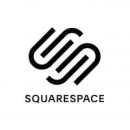Donald A. Norman was the first to coin the phrase “user experience,” back in the 1990s. In his book, The Design of Everyday Things, he wrote, “Design is really an act of communication, which means having a deep understanding of the person with whom the designer is communicating.”
The concept and industry of UX has changed and expanded exponentially since Norman coined the term, but his insistence that design requires deep understanding of users still rings true. And these days, commitments to designing for accessibility make understanding even more important.
At Squarespace, accessibility is important at every step of the design process. Staff Product Designer John Voss works hard to keep accessibility at the forefront for his team, incorporating design guides and accessibility documentation from the beginning of each project.
Instead of focusing on compliance and rules, Voss takes a user-centered approach that foregrounds the needs of the people who will be interacting with the product. “No guidelines address every differently-abled user’s needs,” he said, making communication and understanding paramount.
Built In NYC sat down with Voss to hear more about how he and his team incorporate accessibility throughout entire design processes.
Squarespace offers tools for building websites and e-commerce businesses, in addition to marketing solutions for email and social media.
What are the best practices your team has in place when it comes to accessibility?
Accessibility is important at every step of my team’s process. As a designer, I think some of the best ways to create accessible work are multifaceted. One way is to uncover requirements early in projects using resources like the Web Content Accessibility Guidelines and the U.S. Web Design System’s site, which has top-notch accessibility documentation.
Another is to include accessibility in all your design specs. Not everything can be captured by mock-ups. Stéphanie Walter has a great guide to accessibility documentation for designers. And lastly, test built-out designs using a keyboard and your phone’s screen reader to make sure that they not only work but also feel good to use.
Share an example of what accessible UX/UI design looks like in your team's work.
I work on our design system, Rosetta, which provides UI building blocks and guidelines other teams use to create the product our customers use. We make additions to the system as accessible as we can, and look for opportunities to make the established product more accessible.
The education and collaboration our team and the accessibility team provide is as important as what we make ourselves. Components can pass automated tests, but the accessibility of our product depends on how the company’s designers and engineers put those pieces together.
What are accessibility related missteps that you've seen UX/UI designers make? What can designers do to avoid them?
Too many designers adopt a compliance-first view of accessibility as a pass/fail checklist that can be discouraging and limiting. You can get overwhelmed by all the “rules” you need to know to get accessibility “right.” But no guidelines address every differently-abled user’s needs.
Accessibility isn’t separate from the rest of the design process. It’s the result of a good process based on your users’ real diversity.”
Compliance matters, but starting with the people using your product leads to better design. Learn how disability can affect users’ experiences. You’ll understand the user needs behind the guidelines and be able to go beyond compliance. Accessibility isn’t separate from the rest of the design process. It’s the result of a good process based on your users’ real diversity.







